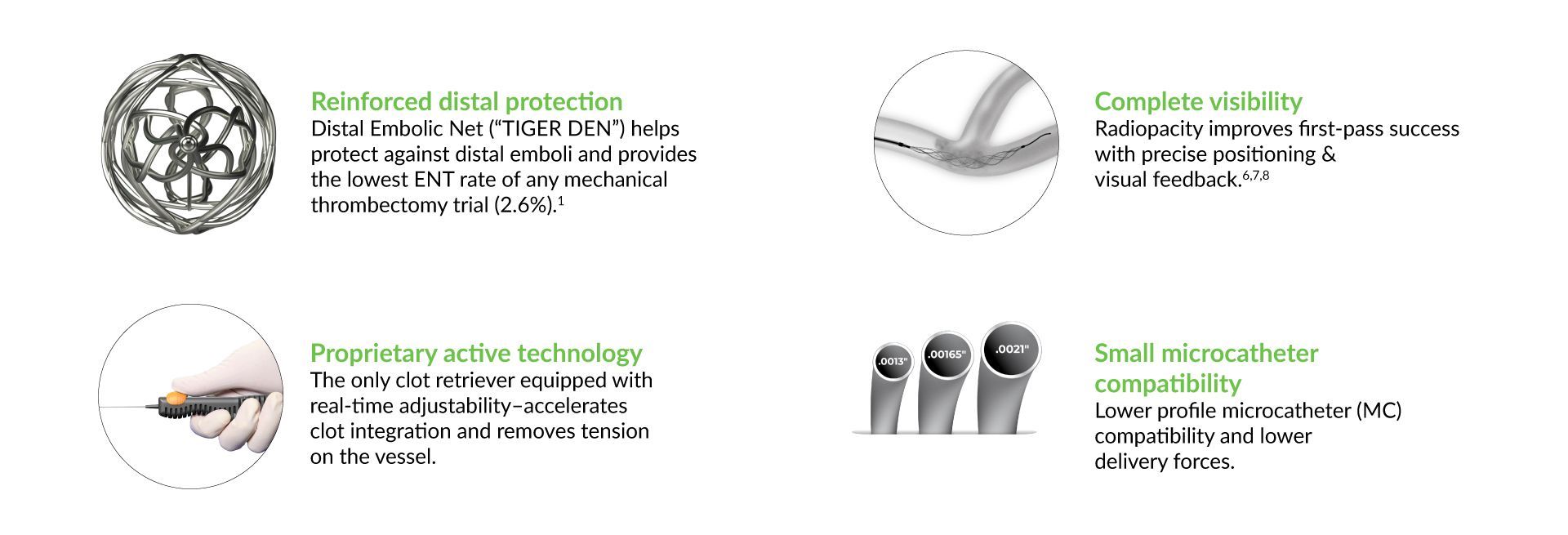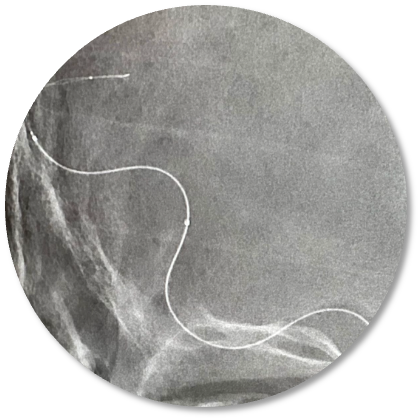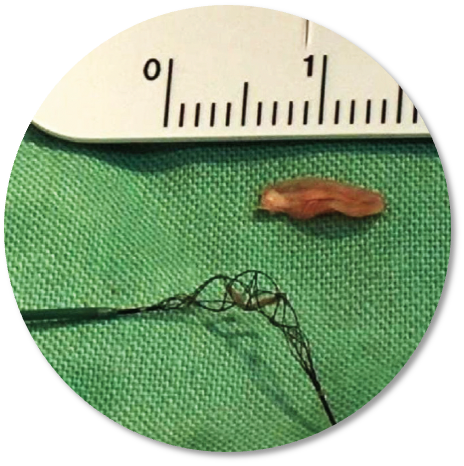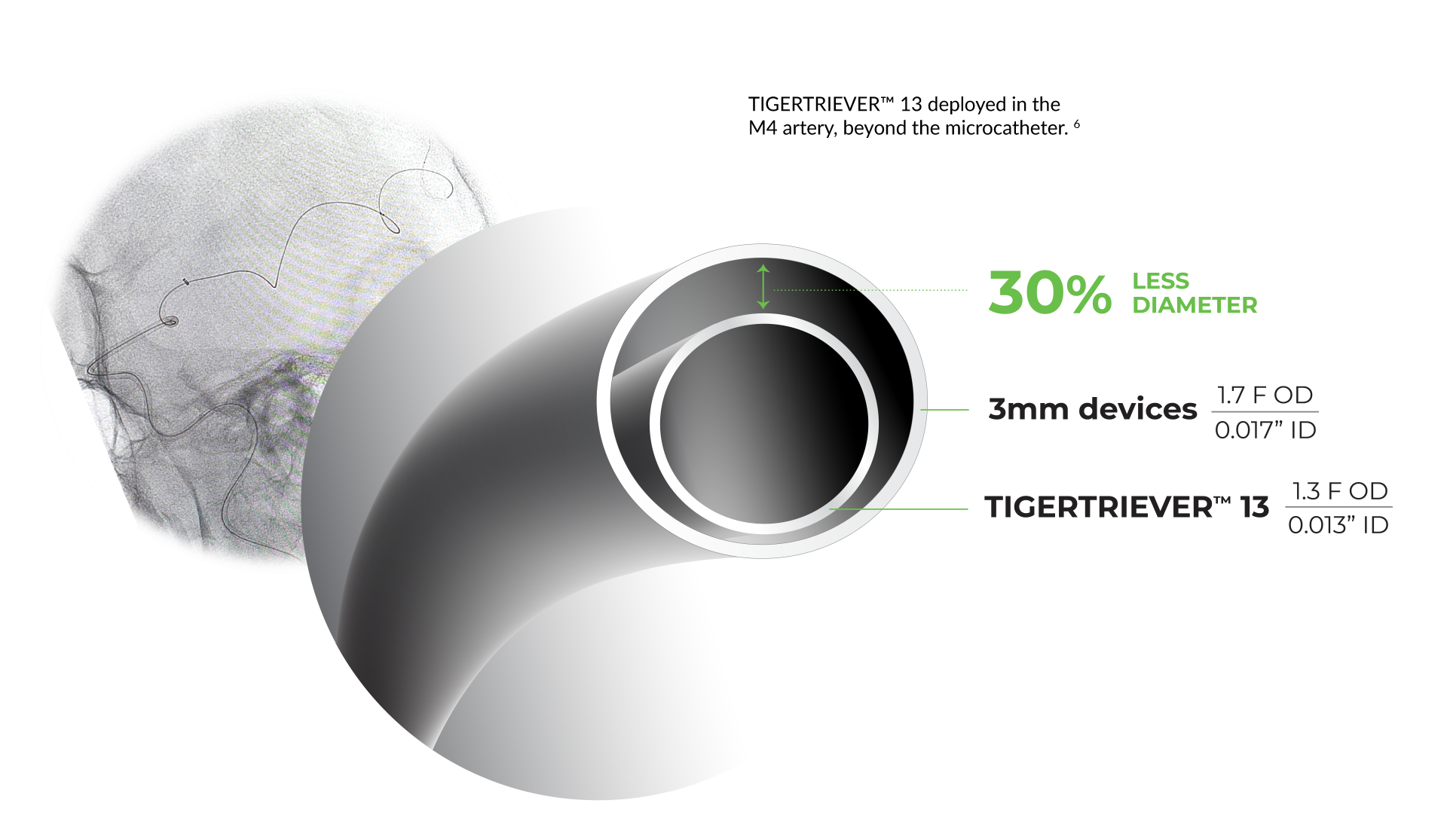Strokes in smaller arteries can still cause disabling deficits, and clot-dissolving drugs work less than half the time.1,2,3
Yet, these vessels are at increased risk for hemorrhage during treatment.
Protect the vessel with TIGERTRIEVER™ 13
Most complications occur during retrieval, as tension can cause vessel stretching, pain, and injury.
TIGERTRIEVER™ is the only device that can remove force before and during retrieval to reduce the potential for injury.
ADVANCING THE FIELD OF STROKE
Rapid Medical™ is pioneering a new frontier to offer treatment to patients suffering from medium vessel strokes. In addition to engineering devices to the unique requirements of the anatomy, the company is leading scientific advancement with the first-ever FDA-approved study for distal indication, the DISTALS Study.
Together with clinicians, the company is expanding what’s possible for the medical field and patients who suffer from this debilitating disease.
Click on a tab below to learn more.
PRODUCT OVERVIEW
The world’s first and only adjustable stent retriever, TIGERTRIEVER TM is designed with active, responsive technology for patient-specific procedures.

SPECIFICATIONS


How It Works
1 PENETRATE the clot with active integration
2 ADJUST with complete visibility
3 RELAX to relieve vessel traction

First-pass distal revascularization with active thrombectomy
View case report →

First-pass, TICI 3 reperfusion in an M3 occlusion
View case report →

First-pass recanalization in a distal M2 occlusion
View case report →
1. Waqas M, Kuo CC, Dossani RH, et al. Mechanical thrombectomy versus intravenous thrombolysis for distal large-vessel occlusion: a systematic review and meta-analysis of observational studies. Neurosurg Focus. 2021;51(1):E5. doi:10.3171/2021.4.FOCUS21139
2. Ospel JM, Menon BK, Demchuk AM, et al. Clinical Course of Acute Ischemic Stroke Due to Medium Vessel Occlusion With and Without Intravenous Alteplase Treatment. Stroke. 2020;51(11):3232-3240. doi:10.1161/STROKEAHA.120.030227
3. Seners P, Turc G, Maier B, Mas JL, Oppenheim C, Baron JC. Incidence and predictors of early recanalization after intravenous thrombolysis: a systematic review and meta‐analysis. Stroke. 2016;47:2409‐2412.
4-5 Data on file
6. Wang, Maud, et al. "The Anch'Or Harpoon Technique With a Manually Expandable Stentretriever (Tigertriever 13), a Technical Note." Frontiers in Neurology, vol. 13, 2022, p. 934690, https://doi.org/10.3389/fneur.2022.934690



